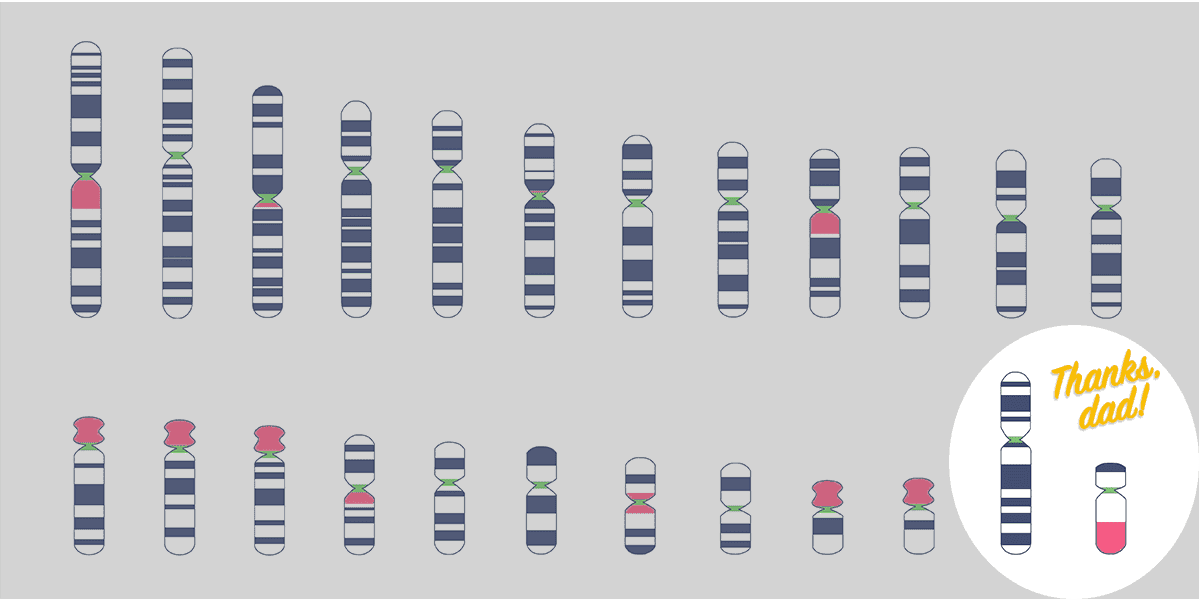“Y” does dad’s DNA help us learn about ancestry?

Without a doubt, the Y chromosome is a popular topic in the genetics world. Not only does it play a role in biological sex determination, but it also gives us a unique window into the past. Like mitochondria, the Y chromosome has a special history buried in its DNA sequence that has been passed from generation to generation. With Father’s Day just around the corner, it’s worth learning about the Y chromosome and how it can be used to tell us about our ancient biological fathers.
In ancestry testing, scientists look for patterns in our DNA that give us clues about where our ancestors likely lived. Over time, as DNA is passed from one generation to the next, small changes—or typos—naturally begin to accumulate. These typos mostly happen at random and often have no effect on an individual. As the typos accumulate, they begin to form a unique, family specific pattern that gets passed on through time. Scientists look for these patterns in your DNA and use them to calculate where your ancestors may have lived. This is challenging, though, because a process known as recombination can mix parts of one pattern with parts of another, making them difficult to untangle. This is where the Y chromosome differs from the rest of the genome.
Unlike every other chromosome in the human genome, the Y chromosome doesn’t change much from generation to generation. This is because people inherit only one version of the Y chromosome, which means it can’t participate in recombination—and that’s important because it means patterns in the Y chromosome aren’t mixed up, making them easier to identify and trace back in time. This makes the Y chromosome particularly useful for ancestry testing1,2.
Due to the identifiable patterns in Y chromosome DNA, scientists can more accurately trace a person’s paternal lineage back thousands of years1,2. It’s important to point out that the Y chromosome is not the only source of information about a person’s ancestry—patterns in other chromosomes can be helpful as well. However, to learn about your paternal ancestry, a male in your family would have to be sequenced and their Y chromosome analyzed.
There are other ways for people without a Y chromosome to learn about their deep ancestry. Mitochondrial DNA analysis is similar to Y chromosome analysis, except this form of ancestry testing can help everyone trace their maternal lineage. Either way, Geno 2.0 from National Geographic is ready to help you learn more about your ancestors—and more about the fathers that came before us.
1Bachtrog, Doris. “Y Chromosome Evolution: Emerging Insights into Processes of Y Chromosome Degeneration.” Nature reviews. Genetics 14.2 (2013): 113–124. PMC. Web. 29 May 2018.
2Poznik, G. David et al. “Punctuated Bursts in Human Male Demography Inferred from 1,244 Worldwide Y-Chromosome Sequences.” Nature genetics 48.6 (2016): 593–599. PMC. Web. 29 May 2018.